The Ultimate Guide to Anti-Chafing Leg Bands
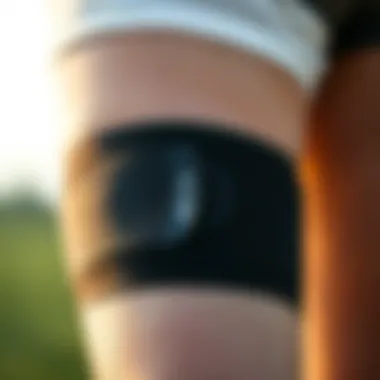
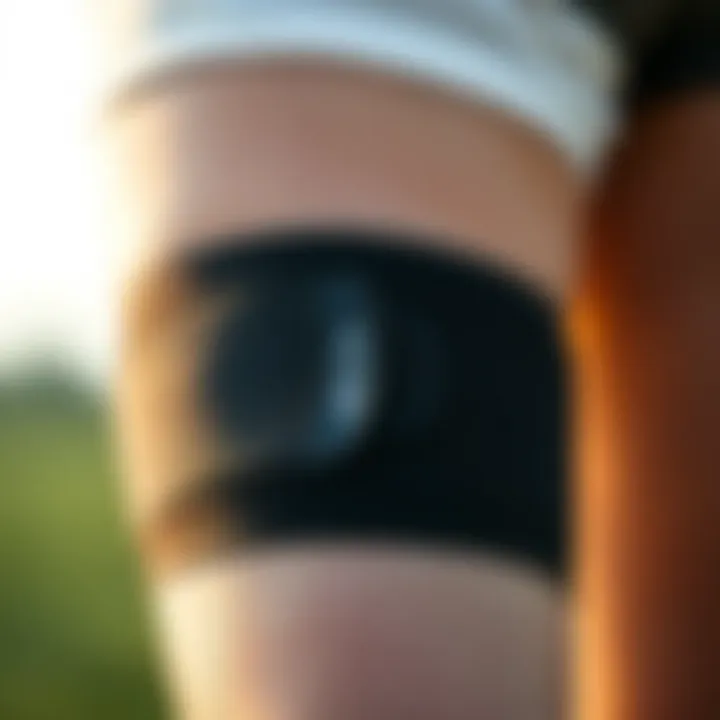
Intro
In the realm of fashion, comfort often struggles to find its footing alongside style. This is especially evident for those who lead active lifestyles, where the right apparel is crucial to both performance and comfort. Anti-chafing leg bands have emerged as pivotal pieces of gear for anyone who values both a fashionable appearance and functional versatility. They serve a dual purpose—helping to prevent skin irritation while adding a touch of sophistication to one’s outfit.
Most often associated with physical activities, from running to cycling, or even a simple brisk walk, these garments are tailored from innovative materials designed to support movement without restriction. Yet, there’s more under the surface. As we explore the multifaceted world of anti-chafing leg bands, we’ll delve into their design, functionality, and the thoughtful selection of materials that go into making them a staple in many wardrobes.
Not merely a practical accessory, these leg bands can elevate one’s entire aesthetic when chosen carefully, making them a worthwhile addition to any fashion-conscious individual’s collection. This guide seeks to combine insights with practical advice. It will arm readers with knowledge on how to select the right leg bands, enhancing their active lifestyles while minimizing discomfort.
Let’s dive into the latest trends driving the market, the significant features to consider, and how choosing wisely can lead to a more enjoyable and stylish experience in the journey of life and fitness.
Understanding Anti-Chafing Leg Bands
In today’s active world, where many people engage in various physical activities, understanding the role of anti-chafing leg bands is crucial. Whether it’s running marathons, cycling, or simply navigating day-to-day tasks, chafing can be a persistent and painful issue. This section will dive into the essence of these bands, shedding light on their significance and the practical benefits they deliver.
Definition and Purpose
Anti-chafing leg bands are specifically designed garments aimed at preventing skin irritation during vigorous movements. These bands act as a protective barrier between the skin and clothing, especially in areas prone to friction. Primarily made from comfortable materials, they hug the body closely but without causing constriction, making them essential for anyone keen on avoiding the discomfort associated with chafing.
Their purpose extends beyond merely preventing chafing. They also enhance overall comfort, allowing for an unrestricted range of motion, which is particularly beneficial for athletes. By maintaining skin integrity and reducing moisture buildup, these bands serve as a double agent – keeping wearers comfortable while promoting skin health.
To put it simply, anti-chafing leg bands turn the tables on friction. Instead of letting discomfort reign, these bands help ensure that activities can be performed with ease.
Historical Context
The journey of anti-chafing leg bands traces back to the evolution of athletic wear. In the early days, athletes struggled with irritation caused by rough materials and ill-fitting garments. The original concept of protective gear focused on padding and support, primarily for larger muscle groups. As the need for comfort during extended physical activities became evident, designers began to create specialized equipment targeting specific problems, with chafing at the forefront of these challenges.
Throughout the decades, various fabrics were experimented with, but it wasn’t until the 1980s that synthetic materials like Spandex and nylon started to gain traction. These materials offered not only stretch but also moisture-wicking properties, leading to the modern iteration of leg bands. By the 21st century, brands began to emphasize function alongside fashion, encouraging a surge in the availability and variety of anti-chafing leg bands.
This transformation not only reflects changes in athletic needs but also highlights the growing consumer awareness surrounding comfort and performance in sportswear. The modern market now presents numerous options catering to different preferences, ranging from casual wearers to elite athletes, showcasing how far we’ve come in tackling the age-old issue of chafing.
The Anatomy of Anti-Chafing Leg Bands
The construction of anti-chafing leg bands is not a trivial subject; it forms the backbone of their effectiveness in preventing discomfort during various activities. Each element, from material choices to thoughtful design features, plays a crucial role in the function and appeal of these garments. A deep dive into the anatomy of these leg bands reveals the thought and engineering behind their design, allowing users to make informed choices that contribute to their comfort and performance.
Material Composition
Synthetic Fabrics
Synthetic fabrics, like nylon and polyester, are widely used in anti-chafing leg bands due to their lightweight nature and durability. One dominant characteristic of these materials is their resistance to wear and tear, which makes them a favored option among active individuals. The unique feature of synthetic fabrics is their ability to stretch and mold to the leg's shape without losing form over time. This quality ensures a snug fit, reducing the chances of chafing during movement, yet it can also trap heat—a potential downside in warm conditions.
Natural Fibers
Natural fibers such as cotton and bamboo are celebrated for their breathability and softness. They provide a comforting touch against the skin, which many find beneficial. The key characteristic of these materials is their moisture absorption, which allows sweat to evaporate more efficiently, enhancing overall comfort. However, their unique feature—being biodegradable and eco-friendly—adds a layer of appeal for environmentally conscious consumers. Yet, natural fibers tend to wear out quicker than synthetics, raising considerations about longevity.
Moisture-Wicking Technology
Moisture-wicking technology, commonly integrated into both synthetic and natural fabrics, plays an essential role in enhancing the functionality of anti-chafing leg bands. This technology works to pull moisture away from the skin, keeping users dry and comfortable during physical activity. The main benefit of this approach is it minimizes the risk of skin irritation caused by dampness. A unique aspect of moisture-wicking materials is their quick-dry capabilities, which not only aids in comfort but allows for a seamless transition between workouts and everyday wear. Some downsides may include a potentially higher price point and the necessity for specific washing instructions to maintain the effectiveness of these fabrics.
Design Features
Seam Construction
Seam construction is another vital aspect of anti-chafing leg bands that significantly influences wearability. Flatlock seams are the most common choice as they lie flat against the skin, reducing friction points typically associated with more traditional seam styles. This specific feature reduces chafing risks considerably during active use, making it a popular design choice. Nonetheless, poorly constructed seams can lead to unraveling, which compromises the garment's integrity.
Elasticity
The elasticity of leg bands is fundamental for enabling movement without restriction. High-quality leg bands use materials that stretch adequately to adapt to various body shapes while retaining their original fit. This elasticity enables a tight but comfortable fit, ensuring the bands stay in place during physical activities. However, one caveat to monitor is that excessive elasticity can lead to slippage, which can create discomfort over prolonged wear.
Padding and Support
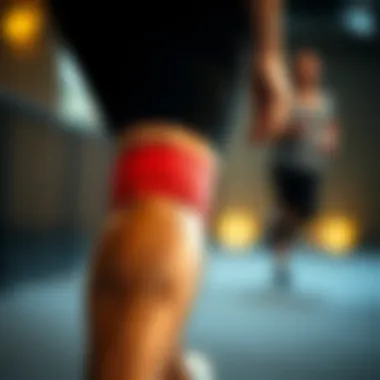
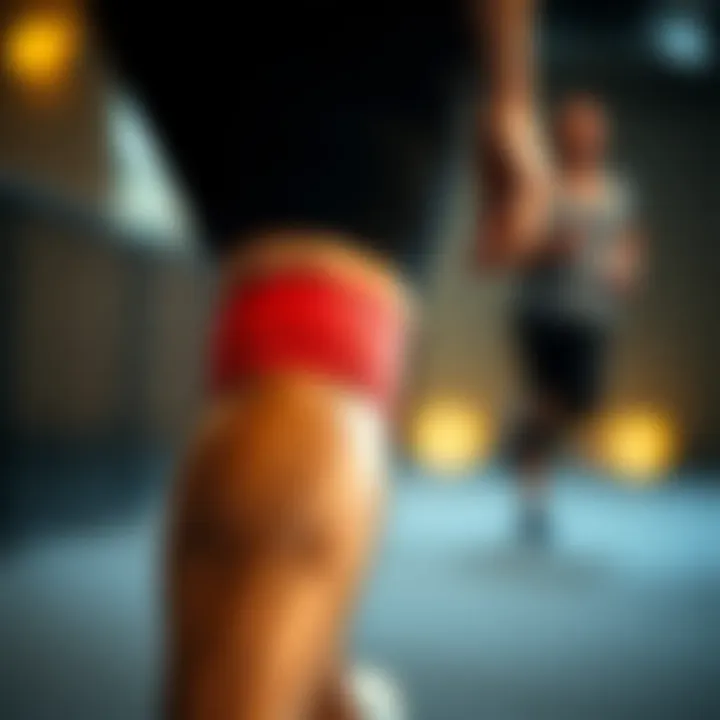
Padding and support in anti-chafing leg bands varies among brands and product lines, providing users with options based on their specific needs. Bands designed with additional padding offer extra protection against impact, suitable for runners or cyclists. The primary advantage here is increased comfort during high-intensity activities. However, the added bulk may not appeal to everyone, especially those preferring a more streamlined look.
Each of these anatomical features plays a vital role in determining the overall effectiveness of anti-chafing leg bands, shaping the user experience, and informing purchasing decisions.
Benefits of Wearing Anti-Chafing Leg Bands
When it comes to maintaining comfort during physical activities, anti-chafing leg bands play a pivotal role. Let’s dive deeper into their various benefits, showcasing why these garments are a must-have for anyone looking to enhance their quality of life while partaking in various endeavors.
Prevention of Skin Irritation
One of the standout features of anti-chafing leg bands is their ability to prevent skin irritation. Chafing can feel like a slow burn, manifesting as uncomfortable redness, soreness, and sometimes even painful blisters. By wearing these leg bands, you create a barrier between your skin and any potential rubbing that occurs from clothing, sweat, or movement. This barrier is particularly valuable in activities like running or cycling, where repetitive friction is a given.
"A stitch in time saves nine; a bit of proactive prevention can save your skin from a world of hurt."
Moreover, the smooth exterior of these bands helps reduce the chances of skin irritations that can lead to conditions like rashes or infections. The soft materials typically used lend an extra layer of comfort, ensuring that you can focus on your performance rather than bodily annoyances.
Enhanced Comfort During Physical Activity
Imagine gearing up for a marathon, the adrenaline coursing through your veins, only to be sidelined by discomfort caused by chafing. Anti-chafing leg bands provide enhanced comfort during any physical activity. Their snug fit doesn’t only minimize friction but also provides support and stability to your legs.
In activities like hiking or intense gym workouts, that supportive feel translates into better performance. These bands often utilize materials that contour to your body shape, offering a customized wear. This enhances mobility, which is particularly crucial in dynamic sports where flexibility is key. When clothes fit right and feel comfortable, it speaks volumes about your overall confidence and ability to excel.
Support in Various Weather Conditions
Weather can be as unpredictable as a cat on a hot tin roof, affecting how our bodies react during activities. Anti-chafing leg bands come to the rescue by providing significant support in varying weather conditions. For those who often exercise outdoors, be it in the sweltering summer or the brisk winter, the right leg bands can make a world of difference.
In warmer conditions, moisture-wicking technology helps draw sweat away from the skin, keeping you dry and less prone to irritation. On the flip side, during colder months, they can provide a bit of added warmth without feeling cumbersome or restricting movement. They act almost like a second skin, offering just the right level of protection. This adaptability ensures that, regardless of the weather, your focus remains on enjoying your activities without the nagging concern of discomfort.
In summary, the benefits of wearing anti-chafing leg bands are manifold, from safeguarding your skin against irritation to enhancing comfort during physical exertions and adapting to weather changes. These benefits cater to those pursuing active lifestyles, making them indispensable in the realm of fitness and beyond.
Choosing the Right Anti-Chafing Leg Bands
Selecting the appropriate anti-chafing leg bands is crucial for an optimal wearing experience. Understanding the factors that contribute to comfort, support, and functionality can make a world of difference in how you engage in physical activities or even go about your daily life. This section highlights essential elements to consider, ensuring that you make an informed choice tailored to your needs.
Sizing and Fit Considerations
Finding the right size is paramount. A well-fitted leg band should be snug without being overly tight. If it’s too loose, it may slide down, leading to chafing; if too tight, it could restrict blood circulation and cause discomfort.
To find the perfect size, take accurate measurements of your thigh’s circumference at the point where the band will sit. Many brands offer sizing charts, which can guide you to the appropriate option. It’s also worth noting that some leg bands may have adjustable features, which add flexibility to your fit. Remember, a good fit is not just about comfort—it impacts the effectiveness of the band in preventing chafing.
Style Options
Choosing the style of anti-chafing leg bands can also impact your overall experience, with different designs catering to various needs and preferences. Below, we delve into the two prominent styles: compression styles and length variations.
Compression Styles
Compression styles are designed to hug the skin closely, offering moderate pressure that supports blood flow. This characteristic can enhance stability during rigorous activities such as running or cycling. Because these bands often promote increased circulation, they can also help mitigate the risk of muscle fatigue.
One unique feature of compression leg bands is their ability to provide layered support while wicking away moisture and allowing breathability. However, it's important to note that those with sensitivities may find them constricting after extended use, making it essential to consider your body’s response.
Length Variations
Length variations refer to the different lengths available in anti-chafing leg bands. They typically range from shorter bands that end mid-thigh to longer ones that reach beyond the knee. A distinguishing factor of longer bands is that they often cover a greater skin surface area, reducing friction and irritation during movement.
While selecting the right length, consider your preferred activity. Longer bands may be advantageous in sports like cycling or running, where friction against the thighs is more prevalent. On the downside, if your clothing is fitted or shorter, longer bands can become visible, possibly detracting from aesthetic preferences.
"Choosing well is an art, just as much as crafting the perfect outfit. Make those leg bands work for you!"
For further reference and tips on fitting and styles, consider checking this article on Reddit or looking up specific sizing guidelines on manufacturer websites.
Applications in Different Activities
Anti-chafing leg bands have carved a niche within the realm of personal wear, significantly enhancing comfort across various activities. Their design and functionality are not just about aesthetics; they serve practical purposes vital for improved performance and overall comfort. Understanding the applications of these bands in different environments helps users make informed choices, leading to elevated experiences whether in sports, daily life, or while exploring the outdoors.
Sports and Athleisure
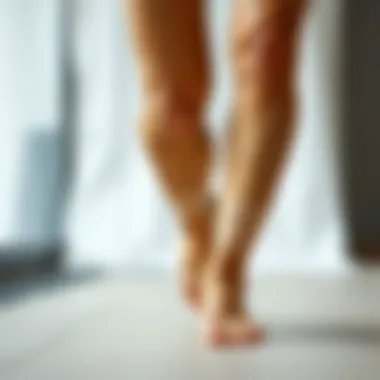
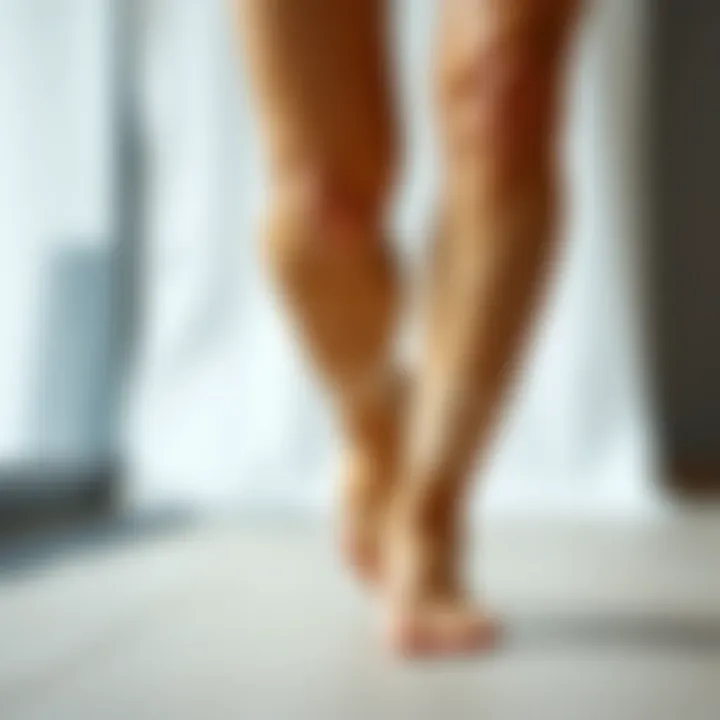
Engagement in sports often comes with its own share of challenges, often invisible to the untrained eye. Athletes, whether professional or amateur, frequently face the daunting issue of chafing during physical exertion. Anti-chafing leg bands can provide an effective solution. They are designed to hug the body while offering mobility, allowing the wearer to move freely without discomfort. More than just a fad, they seek to minimize friction between skin and fabric, which can be a game-changer during those intense training sessions or competitions.
Moreover, in the athleisure world, where style meets functionality, these leg bands play a pivotal role. Consumers often look for attire that not only looks good but also serves a purpose. Brands like Under Armour and Nike have recognized this need, incorporating such bands into their gear. The added comfort allows athletes to focus on performance and style without worrying about irritation. Here's a quick rundown of benefits in the sports domain:
- Reduction in chafing: Keeps skin irritation at bay during long workouts.
- Moisture management: Many modern bands feature moisture-wicking properties, essential for an active lifestyle.
- Aesthetic appeal: Blends seamlessly with athletic wear.
Everyday Wear
The integration of anti-chafing leg bands into everyday wear brings a layer of comfort that’s often overlooked. Day-to-day life can also lead to unwanted friction, especially in warmer weather or during prolonged periods of walking or standing. Wearing leg bands underneath skirts, dresses, or shorts can be a wise choice, fostering not just comfort but also confidence.
People often shy away from shorts or skirts due to the fear of chafing, but these bands can positively shift that perception. They offer a discreet solution that empowers individuals to wear what they want without any hesitation. Factors to consider in everyday use include:
- Versatility: Pairs well with different types of clothing.
- Discretion: Lightweight and often unnoticed beneath apparel.
- All-day comfort: Enables wearers to move freely without concern.
Travel and Outdoor Adventures
Traveling or embarking on outdoor adventures poses another unique setting where anti-chafing leg bands excel. During adventures, like hiking a mountain trail or exploring a new city, the risk of chafing can become apparent—a pesky reminder that can ruin the excitement. The right leg bands can minimize this discomfort, allowing for a focus on exploration rather than irritation.
Investing in quality anti-chafing leg bands for travel purposes entails understanding the environments one might encounter. Some notable considerations are:
- Breathability: Ideal for hot and humid climates.
- Durability: Withstands rugged conditions while retaining comfort.
- Ease of packing: Usually lightweight and compact.
Considering these aspects across different activities will guide individuals in selecting the best anti-chafing leg bands tailored to their needs. This awareness ultimately enhances overall experience and comfort, whether on a sports field, at the office, or exploring the great outdoors.
"The right gear can make all the difference, keeping you comfortable and in the zone, no matter where life takes you."
For further reading on comfort wear, you may check articles from Wikipedia or Britannica. Also, community discussions can provide first-hand insights on platforms like Reddit where users share their experiences and advice.
Care and Maintenance of Anti-Chafing Leg Bands
Effective care and maintenance of anti-chafing leg bands is essential not just for extending their lifespan, but also for preserving their effectiveness. Just like maintaining your favorite pair of running shoes, which require a bit of TLC to stay in top shape, these bands need a thoughtful approach to washing and storage.
Keeping your leg bands in good condition ensures they work as intended—preventing chafing and providing comfort during physical activities. Over time, improper care can lead to a breakdown of the materials, resulting in wear and tear, which ultimately impacts performance. Additionally, a clean band is more hygienic and contributes significantly to your skin health. A bit of routine upkeep can go a long way in maintaining their structural integrity and functionality.
Washing Instructions
The washing process is crucial to avoid any damage to the fabric and to remove sweat, dirt, and odors that accumulate during use. Here are some key guidelines to follow:
- Gentle Cycle: Always opt for a gentle cycle when washing your leg bands. High agitation can pull at the fabric and elastic, which isn’t ideal given their intended snug fit.
- Cold Water: Using cold water not only helps maintain the elasticity but also prevents color fading. High temperatures can warp the material over time.
- Mild Detergents: Choose a mild detergent, as harsh chemicals can strip the fabric of its moisture-wicking properties.
- Avoid Fabric Softeners: While it may seem tempting, fabric softeners can leave an oily residue that diminishes the bands' effectiveness.
- Hand Washing: When in doubt, hand washing is always a safe bet! It allows for direct control over the cleaning process without the risk of unexpected wear.
For an extra layer of protection, it's advisable to place the bands in a mesh laundry bag. This protects them from snagging on other items in the wash.
Storage Recommendations
Storage is another critical factor in maintaining the integrity of your leg bands. Improper storage can create creases that may affect the fit and comfort. Here’s how to store them effectively:
- Cool, Dry Place: Always store your bands in a cool, dry area away from direct sunlight. Heat can weaken elastic fibers, while moisture can promote mildew and odor.
- Flat Storage: If possible, lay them flat rather than folding. This helps avoid any stress on the elastic and prevents unwanted creases.
- Avoid Compression: Do not store any items on top of them that could compress the bands, as this may permanently alter their shape.
"A quality anti-chafing leg band can last for years with proper care. Just like good running shoes, it’s all about how you treat them!"
By keeping these tips in mind, you'll not only get more mileage out of your leg bands but also safeguard your skin health, making your active lifestyle more enjoyable.
Comparative Analysis with Other Anti-Chafing Solutions
To truly grasp the advantages of anti-chafing leg bands, one must also look at the alternatives available in the market. This comparative analysis sheds light on various anti-chafing solutions, helping consumers make informed decisions about what might suit their lifestyle best. The understanding of these solutions not only lays the groundwork to appreciate leg bands better but also highlights their specific benefits in enhancing personal comfort.
Chafing Creams vs. Leg Bands
Chafing creams have long been a popular go-to for those seeking to ward off skin irritation caused by friction. These greasy or gel-like substances are spread on the skin to create a barrier between the skin surfaces or between skin and fabric. While these creams can provide immediate relief, they often have limitations.
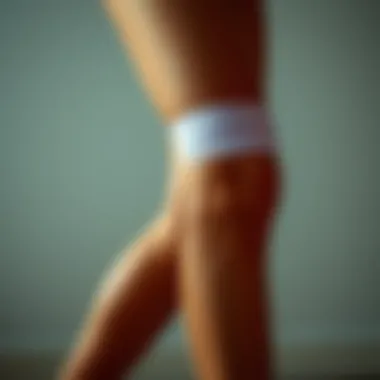
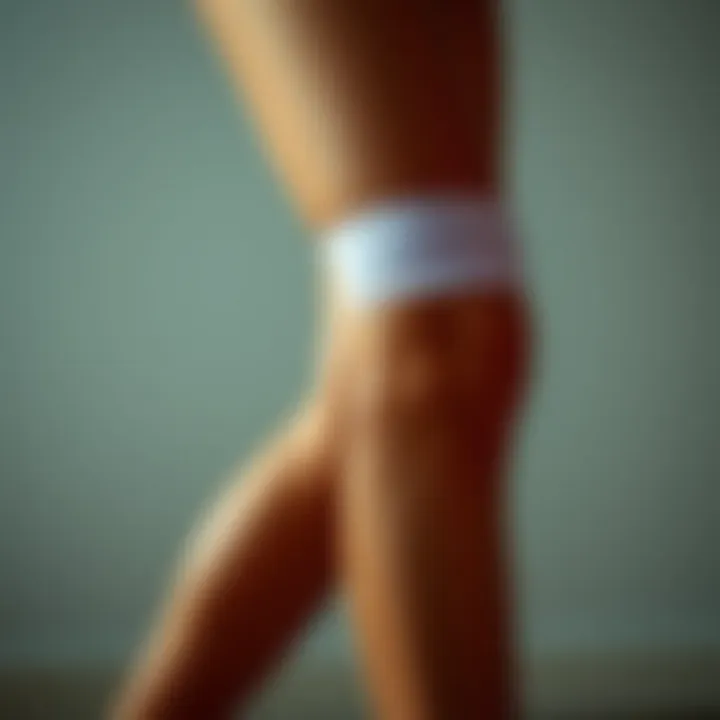
- Application and Reapplication: Unlike leg bands, chafing creams require frequent reapplications, especially during strenuous activities like running or cycling. This can become cumbersome, particularly in longer endurance events.
- Skin Types and Reactions: Not all skin agrees well with chemical formulations. Some users may experience allergies or sensitivities, which can lead to further irritation.
- Longevity: Creams might wash away with sweat or water exposure, making them less reliable during extensive workouts or in adverse weather conditions.
On the flip side, anti-chafing leg bands can be simply slipped on, and they stay in place throughout the activity. They provide a consistent line of defense against skin irritation without the fuss of constant application.
"In the world of chafing solutions, reliability is key. Many find that while creams serve a purpose, leg bands deliver unparalleled comfort throughout prolonged use."
Undergarments Designed for Chafing Prevention
Another alternative often discussed are undergarments specifically designed to tackle chafing. These garments often incorporate integrated support and irritation prevention features. While they provide benefits, they sometimes come with their own pitfalls:
- Fabric Concerns: Many of these undergarments may use materials that are not breathable or moisture-wicking, which can ironically lead to more discomfort when active.
- Fit and Adjustment Issues: Sometimes, the snug fit intended to minimize chafing can ironically lead to constriction, creating its own set of problems.
- Limited Coverage: Unlike leg bands, which can adjust to different leg lengths and styles, specialized undergarments might not be appropriate for all kinds of activities or body types.
Ultimately, while undergarments designed for chafing prevention can be effective for certain users, they may lack the versatility and comfort offered by anti-chafing leg bands. These bands can fit seamlessly under clothing and be worn with a plethora of garments.
Careful consideration of each alternative reveals that anti-chafing leg bands often provide a more practical and reliable solution. They come with the added bonus of lasting comfort, effective moisture management, and versatility across various physical activities. By providing a well-rounded assessment of these alternatives, the comparison aids readers in understanding where leg bands fit into the broader ecosystem of anti-chafing solutions.
Consumer Perspectives and Reviews
Understanding consumer perspectives is indispensable when it comes to anti-chafing leg bands. These insights help shape the market by shedding light on trends, preferences, and experiences. When consumers express their thoughts on a product, it can forge a roadmap for brands to make improvements or adjustments. This section dissects key elements that influence consumer opinions and experiences, including market trends and user feedback.
Market Trends
Recent years have seen a noticeable shift in how consumers approach anti-chafing leg bands. More and more individuals, especially within fitness circles, are gravitating towards multifunctional apparel. Factors like comfort, performance, and style all weigh heavily in their decision-making processes. The rise of athleisure culture has propelled anti-chafing garments into mainstream fashion, making them not just options for athletes but essential for everyday wear.
- Eco-Friendliness: With sustainable fashion gaining momentum, brands are under pressure to adopt environmentally conscious practices. Consumers are increasingly seeking anti-chafing leg bands made from recycled or organic materials, thus requesting transparency in manufacturing.
- Customization: Personalization is a hot topic. Brands that allow customers to choose colors, styles, and sizes tailored to individual measurements are seeing significant engagement. It's no longer just about the product; it's about the experience they curate around it.
- Technology Integration: Innovation plays a crucial role. Consumers often look for features like moisture-wicking fabrics or temperature control, which can vastly enhance comfort level during varied activities.
That said, a little challenge exists on this front: consumers might often be bombarded with options, making it tough to decide which products genuinely meet their needs. Hence, they rely heavily on accessible information and peer reviews to navigate their choices.
User Experiences
User experiences tell personal stories. When individuals share their encounters with anti-chafing leg bands, it goes beyond just ratings; it enters into territory of genuine testimonials that illuminate the practical effects of the product.
- Variety of Activities: Feedback often highlights how reliably these garments perform in diverse settings—from running marathons to casual outings—fueling a sense of reassurance for potential buyers regarding their effectiveness.
- Physical Comfort: Many users describe the immediate comfort, appreciating how these bands help to alleviate discomfort that can arise from skin rubbing during exertion. Nothing like someone saying they wore the bands for hours without a hitch!
- Fit and Size: One consistent piece of advice from users concerns the importance of the right fit. Missteps in sizing have led to dissatisfaction. But when well-fitted, the leg bands foster a feeling of second-skin comfort.
"Finding the right anti-chafing leg band changed how I view comfort during my workouts. It feels liberating!"
Interestingly, various platforms, such as Reddit and Facebook, have seen numerous discussions centered around features that consumers find most appealing or lacking. Whether it’s the softness of fabric or the durability under stress, these dialogues offer a collective wisdom that can guide brands in shaping future innovations.
The Future of Anti-Chafing Leg Bands
As we peer into what lies ahead for anti-chafing leg bands, it’s clear that innovation and consumer demand are shaping their evolution. The importance of this topic in our guide cannot be overlooked; it reflects not just in the design but also in how these garments adapt to meet the changing needs of users across a spectrum of activities. With ongoing research and technological advancements, the anti-chafing leg band market may well undergo significant transformations that enhance user experience. Consumers are no longer satisfied with mere functionality; they are looking for comfort, style, and sustainability—all wrapped into one.
Innovative Materials and Designs
Innovation in materials and design plays a pivotal role in enhancing the effectiveness and appeal of anti-chafing leg bands. There's a buzz in the industry regarding the use of smart fabrics and other high-tech components. Imagine textiles that not only reduce friction but also adapt to body temperature, moisture levels, and even provide compression where needed.
Progress is being made in the realm of moisture-wicking technologies, which have historically been a part of athletic wear. Newer inventions are focused on creating fabrics that can quickly dry while still maintaining a soft feel against the skin. These innovations not only address chafing but also heighten comfort levels during physical exertion.
Some developers even experiment with a blend of structured and unstructured designs, aiming for optimal tension without sacrificing mobility.
"The new era of anti-chafing leg bands is here, emphasizing personal comfort without compromising on style."
Potential trends to watch for may include:
- Wearable Technology Integration: Sensors to monitor skin health or activity levels.
- Customizable Fit Options: Advanced elastic materials allowing bands to adjust to unique body shapes.
- Fashion-Forward Designs: Leg bands that seamlessly blend with current fashion trends, making them as stylish as they are functional.
Sustainability in Production
As consciousness toward environmental impact grows, sustainability in the production of anti-chafing leg bands will likely take center stage. Eco-friendly practices are no longer a nice-to-have; they’re a necessity in the eyes of consumers. As we venture further into the future, an expectation for these products to be made from recycled or sustainable materials is emerging.
Manufacturers are also focusing on reducing waste in their production processes. This might include:
- Sourcing raw materials locally to cut down on carbon footprints.
- Implementing recycling programs for older leg bands, encouraging consumers to return them for a discount on new purchases.
- Utilizing biodegradable packing methods that are kind to the earth.
Furthermore, brands that champion transparency in their manufacturing processes are likely to attract a growing base of ethically-minded consumers. The combination of sustainability and performance is becoming a crucial factor in consumer decision-making. As a result, the companies prioritizing eco-friendly innovations and sustainable practices could very well lead the charge in the competitive landscape of anti-chafing apparel.
As we move forward, the interplay between technology, design, and sustainability will not only redefine anti-chafing leg bands but could also result in a more informed and discerning consumer base that values quality and responsibility. Keep an eye out; the next wave of innovations is on the horizon.







